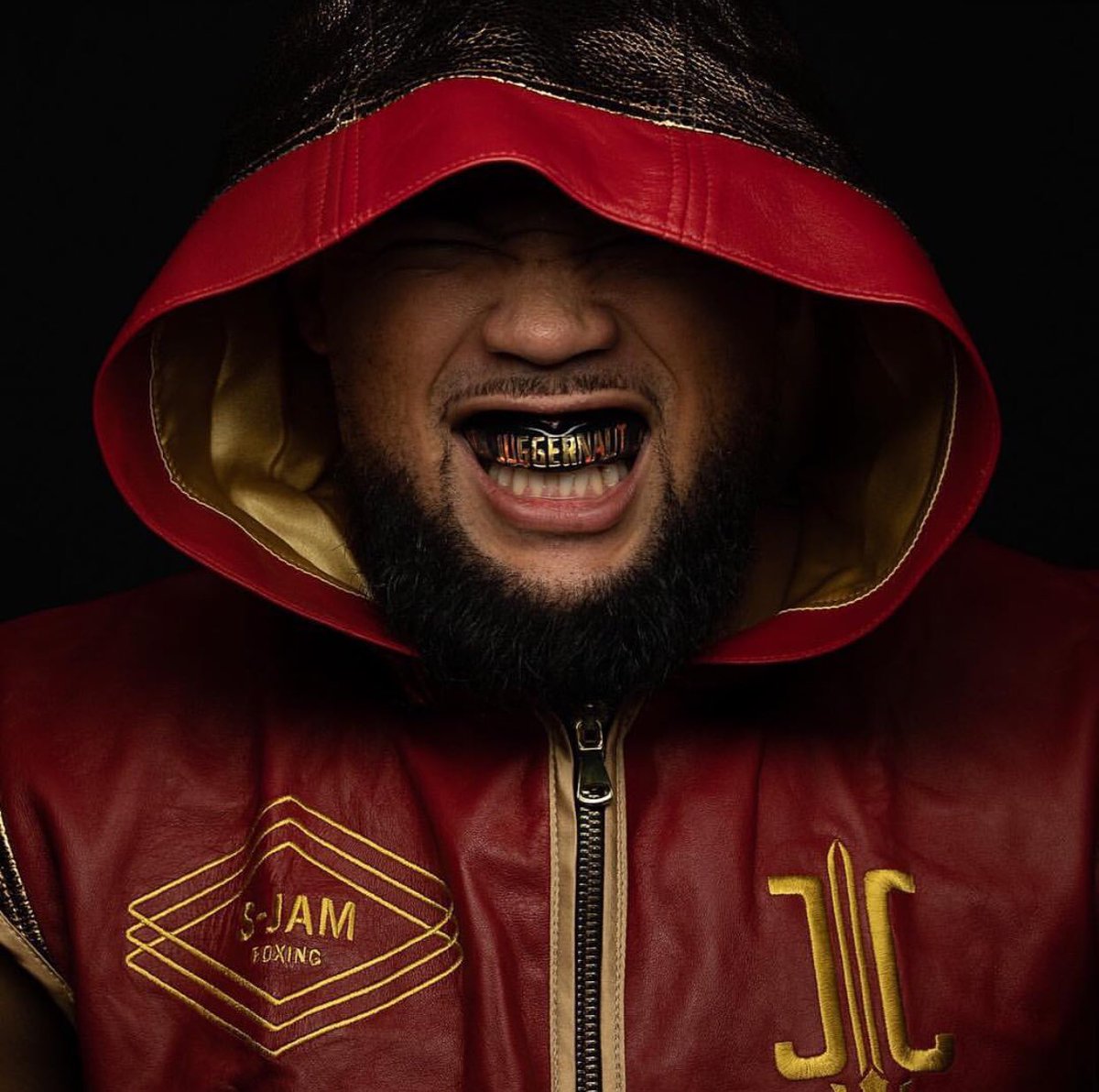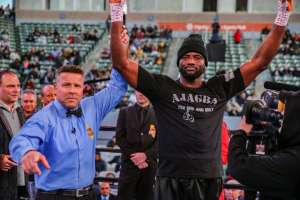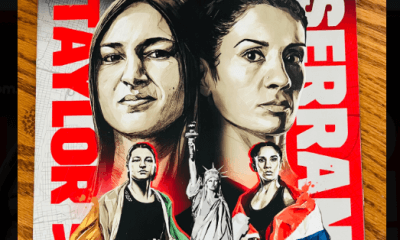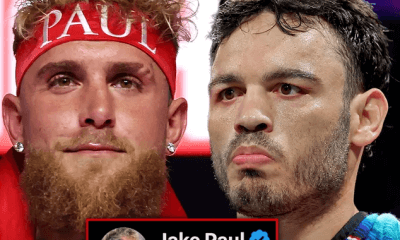Featured Articles
Ajagba vs. Joyce: A Heavyweight SuperFight on Track for 2021

Ajagba vs. Joyce: A Heavyweight SuperFight on Track for 2021
Every successful speculator, from P.T. Barnum to Bill Gates to Mark Zuckerberg to today’s pitchers of products on Madison Avenue, know that the secret to making a really big score in the marketplace is to know what the public will want before people realize they want it. Consumers at various times were subconsciously primed to buy heavily into traveling circuses, personal computers, social media innovations and frozen pork-belly futures because swayers of mass opinion predicted it would be so, and then took the necessary steps to turn their vision into reality. Not that every smart guy’s wager on what will be pans out, which is why some unfortunate executive at the Ford Motor Company wrongly gambled that highways in the late 1950s would soon be traveled by happy owners of new Edsels.
And so it is with boxing, particularly heavyweight boxing, where fortunes can be won or lost on the unhindered development of relatively little-known, at least for now, big men who might, if sufficiently talented, reasonably charismatic and properly handled, blossom into the next Muhammad Ali or Mike Tyson.
Pugilistic visionaries willing to go on the record are Richard Schaefer and Shelly Finkel, men with established track records for coming up with massive winners in the ring and at the box office. Each has a major stake in a different developmental project, undefeated fighters who will be appearing in separate bouts next month. If both prospects take another impressive step forward, expect the hype machines only now beginning to herald their potential superstardom to be cranked up a bit higher.
Are you, Mr. Average Fight Fan, ready to turn your heart and contents of your wallet over to a pairing of England’s Joe “Juggernaut” Joyce and Nigeria’s Efe Ajagba sometime in 2021, or thereabouts? You say you’re not quite sure? Well, maybe you should pay closer attention to what goes down when Joyce (9-0, 9 KOs) squares off against former world title challenger Bryant Jennings (24-3, 14 KOs on July 13 in the 12-round main event in London, and Ajagba (10-0, 9 KOs) swaps punches with Ali Eren Demirezen (11-0, 10 KOs) on July 20 in a 10-rounder at Las Vegas’ MGM Grand, on the undercard of a show headlined by WBA welterweight champion Keith Thurman’s defense against living legend Manny Pacquiao.
Because Joyce, the super heavyweight silver medalist at the 2016 Rio de Janeiro Olympics, is 33 years of age and Ajagba just 25, Schaefer, the former CEO of Golden Boy Promotions who now heads up Ringstar Sports, said his guy’s march toward high-visibility and big-bucks fights of necessity must be at an accelerated pace.
“When Joe signed with me he was 31,” Schaefer noted. “He’s 33 now, so he has to be fast-tracked. He made it clear that he didn’t want to be babied and, like (Vasiliy) Lomachenko, doesn’t want to fight 20 times before he fights someone who is ranked.”
So why the delay in Joyce, who is 6-foot-6 and was 261 pounds for his most recent ring appearance, a third-round stoppage of Russian veteran Alexander Ustinov on May 18, in turning pro?
“His dream was to go to the Olympics and represent the United Kingdom, but the super heavyweight qualification pool in England (for the 2012 London Games) was very deep, and Anthony Joshua filled that slot and won the gold medal,” Schaefer explained. “Joe had to wait another four years, and he went to Rio and got the silver medal. A lot of people thought he beat (France’s) Tony Yoka in the final and should have won the gold. In any case, his new goal is to become heavyweight champion of the world.
“If he beats Jennings he is in line to fight for the WBA `regular’ heavyweight title against the winner of (Manuel) Charr and (Trevor) Bryan. The mere fact that his next fight is against an experienced contender like Jennings shows he is not afraid to step up and expects to continue to pass all tests with flying colors.”
Schaefer dares to compare Joyce to another ponderous puncher not known for swiftness of hand or foot.
“Some say Joe is very slow, and I wouldn’t disagree with that,” he conceded. “He is slow. But he’s big, very strong and he has an unbelievable chin, an iron chin. It’s going to take a missile to put this guy down. He reminds me of George Foreman. People said George was slow, but he was a terrific puncher and he also had a great chin.”
Ajagba’s main claim to fame to date is a bout that was scheduled to have taken place on Aug. 24 of last year, against journeyman Curtis Harper in Minneapolis, Minn. Harper (13-6, 9 KOs) left the ring and headed to his dressing room as the chiseled, 6-foot-5, 240-pound Ajagba made his way toward it, leading to claims that Harper had bolted in fear of taking an inevitable beatdown. Although Harper has insisted his retreat owed to unhappiness over the purse he was to have received, the legend of Ajagba as a Listonesque or Tysonesque intimidator – someone whose mere scowl can turn opponents into quivering mounds of jelly – has taken on a life of its own.
Finkel, who has managed such megastars as Mike Tyson and Evander Holyfield, and currently has a managerial role with WBC heavyweight champion Deontay Wilder, has high hopes that Ajagba will become as key a player in the big-man division as the aforementioned greats, and sooner rather than later.

“It’s early, but he has all the skills,” Finkel said of Ajagba, who is based in Stafford, Texas. “He trains all the time with Ronnie (Shields), which is a blessing, and he punches as hard as anyone, ever. Time will tell, but there’s no limit on how good he could become.”
Schaefer said there is ample reason for fight fans to begin looking ahead to a possible showdown of Joyce and Ajagba, if only because of the individuals who are backing them.
“Efe is with Shelly Finkel, Joe is with me,” he said. “I think Shelly and I have shown we have a great eye for talent, particularly with heavyweights. Shelly was telling me this is the most excited he’s been since he had Tyson.”
There are uncommonly deep eras for heavyweight boxing, sometimes followed by periods where lesser fighters are elevated to a status they could not have imagined a few years earlier. The talent-rich era that spanned the careers of Ali, Foreman and Joe Frazier, which also teemed with such gifted non-titlists as Jerry Quarry, Ron Lyle and Earnie Shavers, was followed by a more fallow period in which various alphabet belts were passed around by the likes of Mike Weaver, Pinklon Thomas, Tony Tubbs, Trevor Berbick and James “Bonecrusher” Smith. Larry Holmes, Ken Norton and Michael Spinks, all legitimately terrific, served as a bridge between the Ali/Frazier/Foreman glory days and the next golden age, when Tyson, Holyfield, Lennox Lewis, and Riddick Bowe helped to resuscitate big-man boxing.
It remains to be seen whether the present crop of top-tier heavyweights, headed by the presumed Big Four of Wilder, Tyson Fury, Andy Ruiz Jr. and Anthony Joshua, is eventually held in the same esteem as the Ali/Frazier/Foreman and Tyson/Holyfield/Lewis/Bowe elite groups. Maybe that will be the case, and maybe not. There is still much evidence to be provided that would serve to buttress either argument.
In 2021, when their promoters foresee Joyce and Ajagba crowding their way to the front of the line, will they find that one or more members of the current Big Four are still blocking their path? Might Wilder and Ajagba square off in a megafight in which Shelly Finkel is the only guaranteed winner?
There is always turnover, today yielding to tomorrow. Schaefer and Finkel agree that a bright new age of heavyweights is just beyond the horizon, boxing’s equivalent of baseball players who soon will make the jump from Triple-A to the majors and dominate when they get there.
In addition to Joyce and Ajagba, heavyweights who in time might take the place of more familiar names in the ratings include Yoka (5-0, 4 KOs), the 2016 Olympic super heavyweight gold medalist from France; Filip Hrgovic (8-0, 6 KOs), a bronze medalist from Croatia at that Olympiad, and possibly the winner of the all-British matchup of Nathan Gorman (16-0, 11 KOs) and Daniel Dubois (11-0, 10 KOs), who vie for the vacant BBB of C title on July 13 in London.
“The next generation not only is going to be knocking on the door in the not-too-distant future, they’re going to kick down the door,” predicted Schaefer.
It should be remembered, however, that even those who would seem to have inside information are not always correct. In the Aug. 13, 1992, edition of the Philadelphia Daily News, I polled nine experts – past or future heavyweight champions Larry Holmes, George Foreman, Michael Spinks, Tim Witherspoon, Ernie Terrell and Tommy Morrison, onetime contenders Earnie Shavers and Marvis Frazier and legendary trainer Angelo Dundee – as to who would be the last man standing from a group that included Holyfield, Lewis, Bowe and Razor Ruddock. Tyson was then incarcerated on a rape conviction, and a sort of unofficial tournament was about to commence in which Lewis would mix it up with Ruddock on Oct. 31, 1992, in London and Holyfield, who had won the WBA/IBF/WBC titles by knocking out Tyson conquerer Buster Douglas, would defend against Bowe on Nov. 13, 1992, in Las Vegas.
The tally favored Ruddock, who received votes from Holmes, Witherspoon, Terrell, Shavers and Morrison. Bowe was the pick of Marvis Frazier and Dundee, Lewis got a single vote from Spinks. Holyfield was blanked, and Foreman, who picked winners of the two “semifinal” bouts, abstained from making a selection for the final on the basis that he would want to fight the survivor himself.
Said Shavers: “Ruddock is a real big puncher, and you know I’m partial to big punchers. You can never count a big puncher out. He’s got a chance to end things with one good shot right up to the last bell.” That view was seconded by Terrell, who opined that “Ruddock is too much of a puncher for Holyfield (in the final). Nobody can take Ruddock’s punch.”
Almost 27 years after I authored that story, this is what we know: Holyfield, Lewis and Bowe are enshrined in the International Boxing Hall of Fame. Razor Ruddock is not.
Proving, as if we didn’t know it already, that nobody knows with any degree of certainty how the future will play out.
Check out more boxing news on video at The Boxing Channel
To comment on this story in The Fight Forum CLICK HERE
-

 Featured Articles4 weeks ago
Featured Articles4 weeks agoAvila Perspective, Chap. 330: Matchroom in New York plus the Latest on Canelo-Crawford
-

 Featured Articles3 weeks ago
Featured Articles3 weeks agoVito Mielnicki Jr Whitewashes Kamil Gardzielik Before the Home Folks in Newark
-

 Featured Articles10 hours ago
Featured Articles10 hours agoResults and Recaps from New York Where Taylor Edged Serrano Once Again
-

 Featured Articles4 weeks ago
Featured Articles4 weeks agoCatching Up with Clay Moyle Who Talks About His Massive Collection of Boxing Books
-

 Featured Articles5 days ago
Featured Articles5 days agoFrom a Sympathetic Figure to a Pariah: The Travails of Julio Cesar Chavez Jr
-

 Featured Articles3 weeks ago
Featured Articles3 weeks agoMore Medals for Hawaii’s Patricio Family at the USA Boxing Summer Festival
-

 Featured Articles7 days ago
Featured Articles7 days agoCatterall vs Eubank Ends Prematurely; Catterall Wins a Technical Decision
-

 Featured Articles4 weeks ago
Featured Articles4 weeks agoRichardson Hitchins Batters and Stops George Kambosos at Madison Square Garden




















